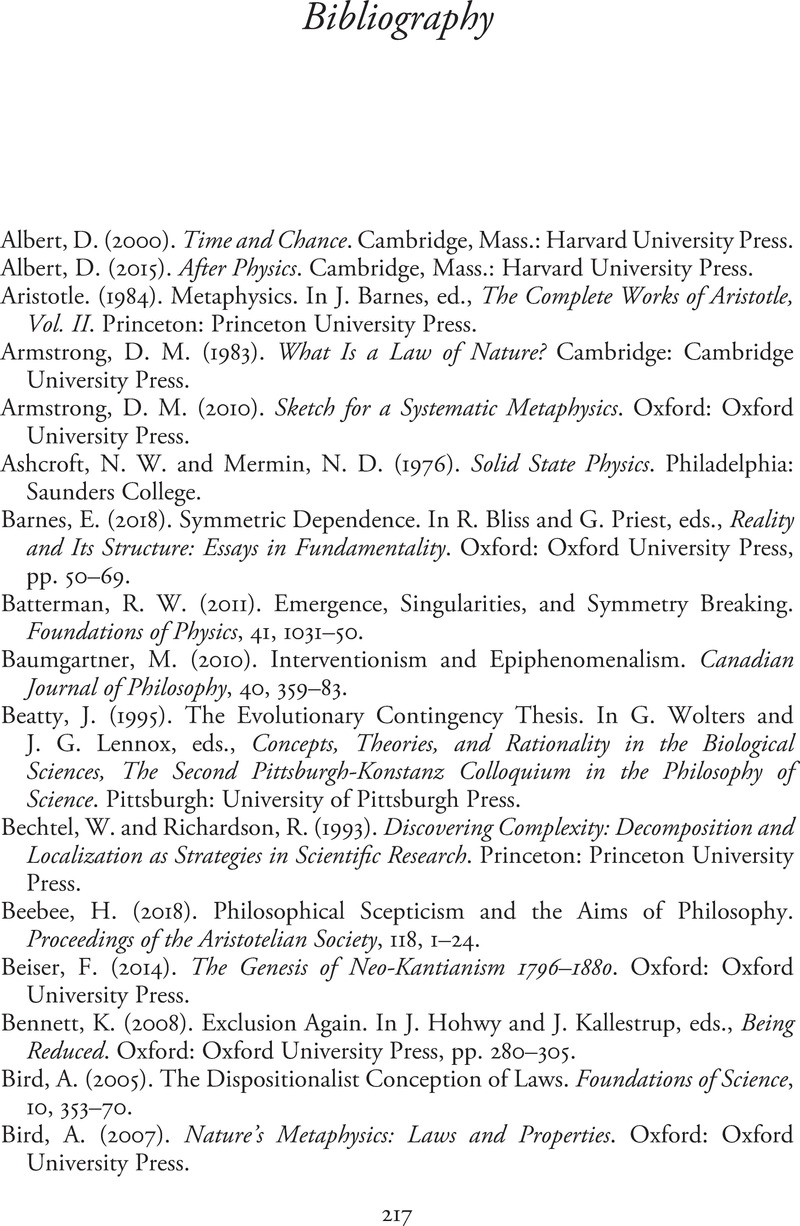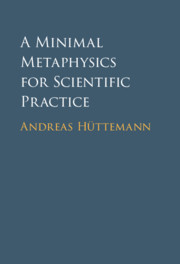Book contents
- A Minimal Metaphysics for Scientific Practice
- A Minimal Metaphysics for Scientific Practice
- Copyright page
- Contents
- Figures
- Acknowledgements
- Introduction
- Chapter 1 Laws of Nature and Their Modal Surface Structure
- Chapter 2 The Problem of Ceteris Paribus Clauses
- Chapter 3 Causation – Conceptual Groundwork
- Chapter 4 Causation – Application and Augmentation
- Chapter 5 Reductive Practices
- Chapter 6 Reduction and Physical Foundationalism
- Chapter 7 Reduction and Ontological Monism
- Chapter 8 Concluding Remarks: Methods and Epistemic Sources in Metaphysics
- Bibliography
- Index
- References
Bibliography
Published online by Cambridge University Press: 04 August 2021
- A Minimal Metaphysics for Scientific Practice
- A Minimal Metaphysics for Scientific Practice
- Copyright page
- Contents
- Figures
- Acknowledgements
- Introduction
- Chapter 1 Laws of Nature and Their Modal Surface Structure
- Chapter 2 The Problem of Ceteris Paribus Clauses
- Chapter 3 Causation – Conceptual Groundwork
- Chapter 4 Causation – Application and Augmentation
- Chapter 5 Reductive Practices
- Chapter 6 Reduction and Physical Foundationalism
- Chapter 7 Reduction and Ontological Monism
- Chapter 8 Concluding Remarks: Methods and Epistemic Sources in Metaphysics
- Bibliography
- Index
- References
Summary

- Type
- Chapter
- Information
- A Minimal Metaphysics for Scientific Practice , pp. 217 - 228Publisher: Cambridge University PressPrint publication year: 2021

